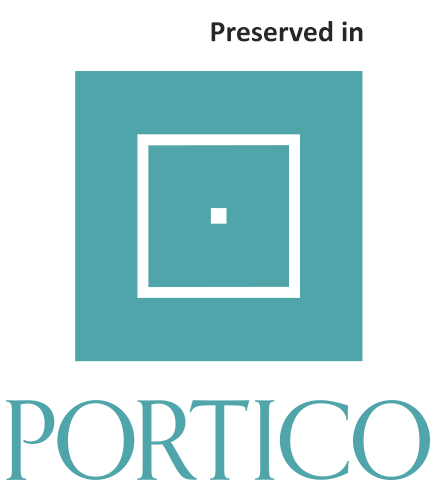Comparative Analysis on Load-deformation Behavior of RC Slabs Incorporating Nano-SiO₂ and Coconut Fibers
J. Environ. Nanotechnol., Volume 14, No 1 (2025) pp. 18-29
Abstract
For modern building materials, improving the structural performance of reinforced concrete (RC) slabs is essential, especially when it comes to maximizing strength, durability, and sustainability. The load-deformation properties of RC slabs with Nano-SiO₂ and coconut fibers are examined in this work. By combining these materials, slabs' mechanical qualities, self-weight, and structural efficiency are intended to be improved. Because of its exceptional strength and self-cleaning qualities, Nano-SiO₂ strengthens the concrete matrix, increasing its resilience to environmental deterioration and durability. As a natural reinforcement, coconut fibers improve flexural performance, toughness, and fracture resistance. Modified RC slabs are cast and tested in this research to assess their overall structural integrity, deflection behavior, and load-bearing capability. Experimental testing, such as load versus deflection analysis, is carried out to compare the slabs' deformation characteristics. The findings show that in comparison to traditional slabs, slabs containing Nano-SiO₂ and coconut fibers have better load resistance, less breaking, and increased ductility. Fiber reinforcement also increases overall structural efficiency by lowering dead weight, which may enable wider spans and lower foundation loads. The results of this study provide essential light on the advantages of incorporating coconut fibers and Nano-SiO₂ into RC slabs. These materials offer a novel approach to lightweight, high-performance slab systems appropriate for contemporary building applications by improving mechanical qualities and sustainability. The research emphasizes how concrete solutions based on cutting-edge and environmentally friendly materials may increase the lifetime and effectiveness of RC constructions.
Full Text
Reference
Abedi, M., Hassanshahi, O., Rashiddel, A., Ashtari, H., Seddik, M. M., Dias, D., Arjomand, M. A. and Keong, C. K. A., sustainable cementitious composite reinforced with natural fibers: An experimental and numerical study, Constr. Build. Mater., 378, 131093(2023).
https://doi.org/10.1016/j.conbuildmat.2023.131093
Abg, A., Dyg. S. Q., Kartini, K. and Hamidah, M. S., Comparative Study on Bubble Deck Slab and Conventional Reinforced Concrete Slab – A Review, J. Adv. Res. Mater. Sci., 70(1), 18–26(2020).
https://doi.org/10.37934/arms.70.1.1826
Ahmed, M., Khan, S. and Aziz, S., Mechanical Characterization of Precast Self-Compacting Concrete Shell Beam Incorporating Grounded Coal Bottom Ash and Coir Fibre, (2022).
https://doi.org/10.21203/rs.3.rs-2296677/v1
Aslam, F. and Shahab, M. Z., Supplementary cementitious materials in blended cement concrete: Advancements in predicting compressive strength through machine learning, Mater. Today Commun., 38, 107725(2024).
https://doi.org/10.1016/j.mtcomm.2023.107725
Dinh, N. H., Pham, H. H., Kim, S. H. and Choi, K. K., Tensile performance and cracking characteristics of sustainable textile-reinforced cementitious composites utilizing expanded glass aggregate and fly ash replacement, Constr. Build. Mater., 425, 136084(2024).
https://doi.org/10.1016/j.conbuildmat.2024.136084
Hwang, C. L., Tran, V. A., Hong, J. W. and Hsieh, Y. C., Effects of short coconut fiber on the mechanical properties, plastic cracking behavior, and impact resistance of cementitious composites, Constr. Build. Mater., 127, 984–992(2016).
https://doi.org/10.1016/j.conbuildmat.2016.09.118
Jose, A. S. R. and Rajkumar, D., Experimental Investigation of Ferrogeopolymer Confinement for Enhancing Brick Masonry Column Resilience under Axial Compression, Int. J. Civ. Eng., 11(4), 80–91(2024).
https://doi.org/10.14445/23488352/IJCE-V11I4P108
Nawab, M. S., Ali, T., Qureshi, M. Z., Zaid, O., Ben, K. N., Sun, Y., Anwar, N. and Ajwad, A., A study on improving the performance of cement-based mortar with silica fume, metakaolin, and coconut fibers, Case Stud. Constr. Mater., 19, e02480(2023).
https://doi.org/10.1016/j.cscm.2023.e02480
Ranjitham, M. and Manjunath, N. V., Experimental and numerical investigation on the structural behavior of Bubble Deck Slab with conventional slab, Int. J. Trend Sci. Res. Dev., 2(3), 2614–2617(2018).
https://doi.org/10.31142/ijtsrd11532
Saini, K., Matsagar, V. A. and Kodur, V. R., Recent advances in the use of natural fibers in civil engineering structures, Constr. Build. Mater., 411, 134364(2024).
https://doi.org/10.1016/j.conbuildmat.2023.134364
Susurluk, G., Sarikaya, H. and Bostanci, L., Utilization of natural kapok and coconut fiber in thermally insulated sustainable concrete design, Environ. Sci. Pollut. Res., 31(52), 61469–61490(2024).
https://doi.org/10.1007/s11356-024-35324-0
Wang, W., Zhang, Y., Mo, Z., Chouw, N., Jayaraman, K., and Xu, Z., A critical review on the properties of natural fiber reinforced concrete composites subjected to impact loading, J. Build. Eng., 77, 107497(2023).
https://doi.org/10.1016/j.jobe.2023.107497
Zaid, O., Zamir, H. S. R., El, O. M. H., Martínez-García, R., De P. G. J. and Yousef, S. E. A. S., Experimental and analytical study of ultra-high-performance fiber-reinforced concrete modified with egg shell powder and nano-silica, J. Mater. Res. Technol., 24, 7162–7188(2023).
https://doi.org/10.1016/j.jmrt.2023.04.240
Zhang, P., Sun, Y., Wei, J. and Zhang, T., Research progress on properties of cement-based composites incorporating graphene oxide, Rev. Adv. Mater. Sci., 62(1), 20220329 (2023a).
https://doi.org/10.1515/rams-2022-0329
Zhang, P., Zhang, P., Wu, J., Guo, Z., Zhang, Y. and Zheng, Y., Mechanical Properties and Durability of Sustainable Concrete Manufactured Using Ceramic Waste: A Review, J. Renewable Mater., 11(2), 937–974(2023b).
https://doi.org/10.32604/jrm.2022.023290
Zheng, Y., Zhuo, J., and Zhang, P., A review on the durability of nano-SiO2 and basalt fiber modified recycled aggregate concrete, Constr. Build. Mater., 304, 124659(2021b).
https://doi.org/10.1016/j.conbuildmat.2021.124659
Sujitha, V. S., Ramesh, B. and Joseph, R. X., Influence of nano alumina reinforced superabsorbent polymer on mechanical, durability, microstructural and rheological properties of cementitious materials, J. Build. Eng., 79, 107780 (2023),
https://doi.org/10.1016/j.jobe.2023.107780
Sujitha, V. S., Ramesh, B. and Xavier, J. R., Effects of incorporation of nanotitania in magnesium phosphate cement for the protection of carbon steel in harsh environments, Archiv. Civ. Mech. Eng., 24, 79 (2024).
https://doi.org/10.1007/s43452-024-00896-8
Martinelli, F. R. B., Ribeiro, F. R. C., Marvila, M. T., Monteiro, S. N., Filho, F. D. C. G., Azevedo, A. R. G. D., A Review of the Use of Coconut Fiber in Cement Composites, Polym., 15, 1309 (2023).
